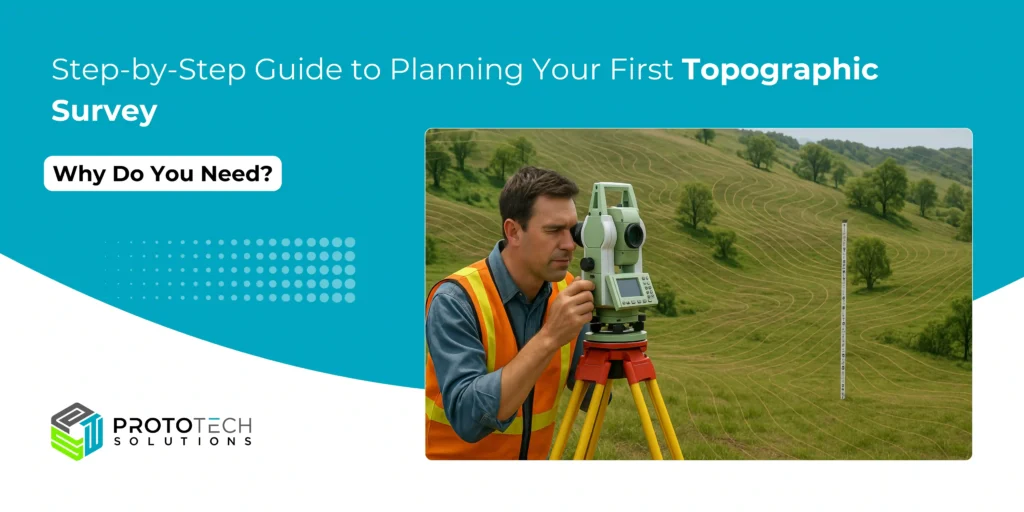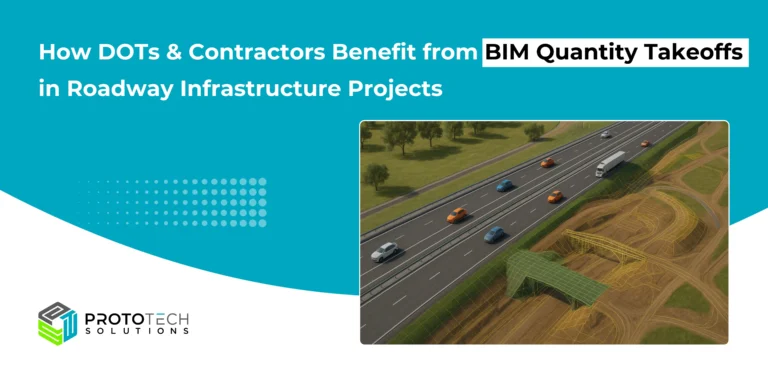Step-by-Step Guide to Planning Your First Topographic Survey

Whether you’re starting a construction project, designing a landscape, or planning a property boundary adjustment, a topographic survey is one of the first and most crucial steps in the process.
Planning your first topographic survey can feel overwhelming, but with the right approach, you can ensure accurate results and a smooth project experience. Whether you’re a landowner, developer, or a budding surveyor, in this guide post, we’ll walk you through each step of planning your first topographic survey so you feel confident and prepared from start to finish.
What Is a Topographic Survey and Why Do You Need One?
A topographic survey maps the natural and man-made features of a parcel of land, capturing details like elevation changes (hills, slopes, valleys), trees, buildings, roads, and drainage features like rivers or ditches. These surveys are crucial for land development, construction, environmental assessment, and even landscaping projects. Having a reliable topographic map helps you make informed decisions, avoid costly mistakes, and streamline your project from start to finish.
Topographic maps provide essential details frequently used by architects, engineers, and contractors for accurate site design and development.
Why Do You Need a Topographic Survey?
There are several situations where a topographic survey is essential:
- New construction: Helps determine the best location and elevation for buildings
- Renovations or additions: Ensures compliance with local codes and terrain suitability
- Landscaping: Assists in creating proper drainage and grading plans
- Legal or zoning issues: Supports boundary disputes or planning applications
Types of Topographic Surveys: Which One Do You Need?
Choosing the right type of topographic survey is crucial for the success of your project, whether you’re planning construction, land development, or simply need detailed site data. Topographic surveys come in several forms, each tailored to specific needs, site conditions, and project scopes. Below are the most common types of topographic surveys, what they’re used for, and when you might need each one:
| Survey Type | Description & Use Case | Best for |
| Photogrammetric Survey | Uses aerial photos (drones or planes) to map features and elevations, ideal for large or hard-to-reach sites | Urban mapping, remote areas |
| 2D Topographic Survey | Provides a flat, plan-view map showing features and boundaries | Basic planning, small sites |
| 3D Topographic Survey | Delivers a three-dimensional model of the land, capturing contours, elevations, and features in detail | Infrastructure, complex sites |
| Aerial (Drone) Survey | Employs UAVs for rapid, wide-area mapping, often combined with photogrammetry or LiDAR | Large, inaccessible areas |
| LiDAR Survey | Uses laser scanning (often from drones) to penetrate vegetation and capture detailed ground data | Forested or overgrown sites |
| As-Built Survey | Records the exact position of structures after construction to verify compliance with plans | Construction verification |
| Hydrographic/Bathymetric | Maps underwater topography for lakes, rivers, and coastal areas | Marine, river, and lake work |
| Mortgage/Boundary Survey | Basic surveys for property boundaries, often required for loans or legal documentation | Real estate, legal purposes |
Pre-Survey Planning and Preparation
Step 1: Define Your Survey Objectives
Before you set foot on the site, clarify why you need the survey. Are you planning new construction, assessing land for environmental reasons, or preparing for a landscaping overhaul? Your objectives will shape the scope, level of detail, and deliverables required from the survey.
- Ask yourself: What features must be captured? What level of accuracy is needed? Who will use the final map?
- Tip: Involve all stakeholders (architects, engineers, contractors) early to confirm their requirements and avoid missing critical data
Step 2: Regulatory Compliance and Permits
Check local regulations. Some places require permits before surveying. Failing to get permission can cause delays or fines. Contact local authorities or landowners to secure all necessary approvals before starting. This keeps your project legal and smooth.
Step 3: Conduct a Thorough Site Assessment
Visit the site to get a feel for the terrain and pinpoint any challenges. Look for obstacles like dense vegetation, water bodies, or steep slopes that might affect access or visibility. This is also the time to plan routes for bringing in equipment and personnel.
- Pro Tip: Take notes and photos during your visit. These will help you plan equipment needs and anticipate potential issues.
Step 4: Select the Right Survey Equipment
Your choice of equipment depends on your project’s requirements, site conditions, and desired accuracy. Common tools include:
- Total Stations: Great for high-accuracy measurements, especially in areas with clear lines of sight.
- GPS/GNSS Receivers: Useful for large, open areas where satellite signals are strong.
- Laser Scanners & Drones: Ideal for quickly capturing large datasets or hard-to-reach areas, though they may struggle under dense tree canopies.
- Data Collectors: Attach to your survey rod to record and organize data efficiently.
Step 5: Establish Control Points
Control points are reference locations with known coordinates, serving as the backbone of your survey. Place them strategically around the site to ensure all measurements are accurate and consistent.
- How-To: Use your chosen equipment to establish these points, and double-check their positions for reliability.
- Tip: Mark control points clearly and record their details for future reference.
Step 6: Plan Your Data Collection Strategy
Now it’s time to map out how you’ll collect the data:
- Determine the Area of Interest (AOI): Define the boundaries and specific zones to be surveyed.
- Choose the Level of Detail: Decide on contour intervals, spot elevation density, and which features (trees, utilities, buildings) to include.
- Select Survey Methods: Depending on terrain and equipment, use traversing, radiation, or grid methods. For example, traversing with a total station is common for precise work on flat or wooded sites.
Step 7. Review the Topographic Map
After the field data is collected, your surveyor will create a topographic map or digital 3D model. This will include:
- Contour lines (showing elevation changes)
- Key features like trees, buildings, fences, etc.
- Utility locations (if included in the scope)
Review this map with your architect, engineer, or contractor. Make sure it meets your original goals and includes all the necessary information.
Step 8: Process and Check the Data
Once fieldwork is done, import your data into mapping or CAD software:
- Clean and Organize: Remove any duplicate or erroneous points, and ensure all features are properly labeled.
- Generate Maps: Create contour maps, spot elevation grids, and feature layouts as required by your objectives.
- Quality Assurance: Have a senior team member review the outputs for accuracy and completeness before finalizing.
Frequently Asked Questions (FAQ) About Topographic Surveys
Q. How much does a topographic survey cost?
A: It depends on your location, property size, and complexity. Most range from $500 to $2,000+.
Q. How long does it take?
A: Fieldwork may take 1–3 days, with map delivery within a week or two, depending on the scope.
Q. Do I need a topographic survey before buying land?
A: It’s not required, but highly recommended, especially for sloped or wooded lots.
Conclusion
Planning your first topographic survey may seem daunting, but following these steps simplifies the process. Focus on clear objectives, choose the right tools, and prepare thoroughly. Well-planned surveys lead to better data, fewer mistakes, and successful projects. Remember, a good start makes all the difference. Your accurate land maps lay the foundation for smooth, efficient work and lasting results.
Are you looking to hire a CAD drafter specializing in land surveying? ProtoTech Solutions is here to help your projects with precision and efficiency while ensuring full regulatory compliance. We have successfully delivered various projects worldwide
We can provide a dedicated resource for your specific needs. This resource will coordinate with your architects, engineers, and contractors to enhance your land survey project.
Our expertise in land surveying drafting includes ALTA Surveys, Topographic Surveys, Boundary Surveys, Route Surveys, Subdivision Mapping, Mortgage Surveys, As-Built Surveys, and more. Let us help you achieve your project goals!






